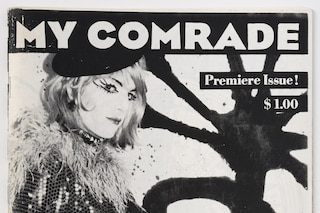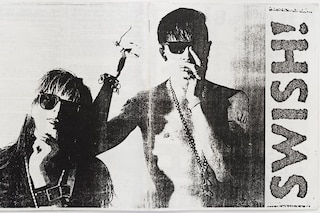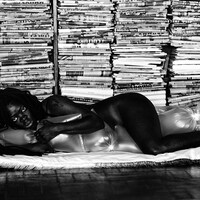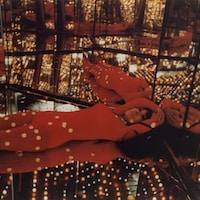Here, a curator of Copy Machine Manifestos: Artists Who Make Zines tells the story of zine-making through punk, riot grrrls, and post-internet appropriation art
“The typical definition is [a] self produced, cheaply-made publication, usually photocopied, and usually stapled down.” That is, historically, what’s made a zine a zine, says Drew Sawyer, a curator of the new exhibition Copy Machine Manifestos: Artists Who Make Zines at the Brooklyn Museum. For the show itself, though, he and his co-curator Branden Joseph blew the definition wide open. “We really included anything that people called a zine, or that contemporary readers called a zine, when it was made.”
The result is that Copy Machine Manifestos – a first-of-its-kind survey of zines in North America – traces the evolution of the medium over the course of five decades. What emerges is a process of broadening outward, with zine makers reacting to (and at times influencing) the technologies and politics of their age, from the punk scene of the mid-1970s, to the underground feminist and queer movements of the 1980s and their rise to the surface with the riot grrrls of the 90s. Today, Drew notes, “what a zine is is much more expansive and capacious than it was in the 1970s.”
To use an obvious metaphor, the definition of zines itself has been xeroxed over and over again throughout the years, losing a little bit of clarity with each scan and copy. If we really want to get to the pristine, pen-and-ink source, we have to go even further back than punk’s heyday, to the Brooklyn of the late 1960s. There, mail artists like John Dowd and Ray Johnson were tapping into the scrapbooked aesthetics of old sci-fi fanzines (hence the word “zine”) to produce subversive work for a localised network of art lovers. Their post-pop art correspondence featured appropriated imagery ranging from Disney characters to NSFW Tom of Finland illustrations, and was closely tied to the gay liberation movement that flourished in the wake of the Stonewall Riots. It also allowed these conversations to go on under the radar, in printed pamphlets that contained images and ideas deemed too explicit for established publications or gallery spaces.
Many of the key figures in these networks also became active in the punk scene of NYC, San Francisco, and LA, says Drew. “One of the arguments of Copy Machine Manifestos is that correspondence artists created the aesthetic first, and then punk adopted it.” The appeal, of course, is obvious, in a music world that trafficked in controversial language and symbolism, much of it sexually explicit.
In fact, zines have remained a conduit for bold and bleeding-edge ideas – from the punk feminism of Bikini Kill, to conversations about race, queer culture, and radical politics – to this day, even after the internet opened up new, “democratised” channels of communication. “It continues to be a way that one can control the production and distribution of their own work without the pressures of the market and other commercial forces,” Drew explains. “Even social media and online spaces are subject to censorship and surveillance. Meta regularly takes down posts.” (As creators know all too well.) “Zines continue to be a way to bypass the corporate systems that control so much [of our] media.”
On top of that, there’s the ongoing aesthetic influence of zines, which has spread throughout all of our media, from the intensely personal politics of posting online, to the lo-fi, DIY grittiness of post-punk art and photography. In the Brooklyn Museum show, this is brought into focus via painting, photography, film, and video art, which accompanies the staple-bound publications themselves. Below, Drew Sawyer tells us more.
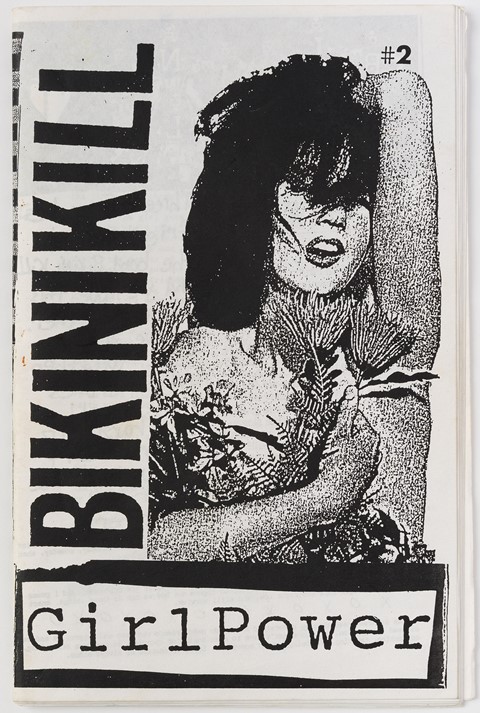
What was your first encounter with a zine – any formative memories?
Drew Sawyer: I grew up in the 90s, in a small town in Iowa, so I was primarily drawn to the internet by the time I was a teenager. The Internet was really my connection with culture at large. But moving to New York in the early 2000s, there was this kind of resurgence of zines by artists, especially around [bookstore and arts space] Printed Matter. There’s even a section of the show that’s like my memories of New York circa 2005, which includes zines by LTTR, Terence Koh, Brontez Purnell.
Then, I ended up doing an exhibition called Art after Stonewall 1969 to 1989, which looked at the first 20 years of art after the Stonewall Rebellion, and ended up including quite a number of zines from both the 70s and 80s, including Joey Terrill’s Homeboy Beautiful, zines by Vaginal Davis, a zine called Thing, which was based out of Chicago…
What was the appeal of these zines as a medium, after the internet?
Drew Sawyer: Why zines, right? Especially in the age of the internet. It’s something Branden and I thought about a lot. It’s also a question we’ve gotten asked a lot.
I think people who don’t know a lot about zines are surprised when they hear that there’s been a major resurgence in the last decade, in spite of the fact that one could produce these things digitally, and distribute them much more cheaply and easily. I think it’s the tactile nature. So many people love collecting printed matter books, artist books, zines. That’s definitely a part of it, that direct, almost unmediated connection with an artist.
It’s also something that almost anyone can do in the confines of their own home. Whether that’s starting on a desktop format, or the old-school way: just sheets of paper, scissors, some glue, some white-out, some ink, and a copy machine or a scanner. It doesn’t require an artist to have a gallery, to have a lot of money for production, all the things that – especially in the last 20 years, with the financialization of the art world – has made artworks far beyond the reach of even the average upper class individual. Our world is really the plaything of billionaires. I think zines, especially for artists, continue to provide a way for them to make work and connect with people.

The title, Copy Machine Manifestos: Artists Who Make Zines, hones in on zines as an artists’ medium. How is that represented in the show?
Drew Sawyer: The show has over 1000 zines and artworks, not only mailers and correspondence, but also paintings, documents of performances, film, and photographs… works that individuals produce with the idea of it being quote unquote ‘fine art’. So Bruce LaBruce and GB Jones [the founders of queer punk zine J.D.s] were filmmakers, and they would do film screenings at issue launches. We actually remade one of those screenings, which includes several films by GB Jones and Bruce, along with other collaborators. The exhibition is really multimedia, especially when it tells the story [of] the intersection of zines with the adoption of video.
Do you think zine culture influenced traditional artforms in a notable way, as well as the other way around?
Drew Sawyer: The copy machine was not only the perfect tool for dissemination, but was also the perfect aesthetic to challenge dominant modes of artistic production. If you think about photography in the 1970s, you think of black and white gelatin silver prints, something finely produced that signals to people: ‘This is an art object.’ Photocopying something did the opposite. Not only is it a little bit gritty, a faded, degraded image, but also something that is quickly produced [and] easily disseminated. I think there’s so much in that connection between zines and contemporary art practices.
I would even argue that, if we think about certain modes of artistic practice, especially since the 1990s, such as self-portraiture, or artists who perform various identities and think about how media shapes our perceptions of ourselves, this is something you see in zines, from John Dowd. Hopefully, the show demonstrates that to tell a history of art in North America [over] the past 50 years, and to not incorporate zines, is not the full story.
Do you think the same can be said for politics, and specifically the radical, underground politics that zines often deal with?
Drew Sawyer: Zines are definitely a good tool for disseminating information, and also creating a sense of community. It’s hard to say what influences politics. There’s so many things happening simultaneously, different forms of organising, different strategies, and [they] might be loud forms, but they might also be quieter forms that are not documented. Certainly zines are good documentation of these different forms of activism.
In the show, one great example would be Infected Faggot Perspectives, which was a zine from the late 80s and early 90s published out of Los Angeles. In really angry language and imagery [it] talked about the experience of individuals living with HIV/AIDS. Zines have always been a really good medium for conveying information that is not subject to censorship, and bringing people together who might not have positions of power or the means of organising otherwise.
Why do you think the medium has gone overlooked for decades, by museums and curators?
Drew Sawyer: Doing a show on zines is not easy, as Brandon and I learned while working on this show for over four years. There [are] so many challenges with organising exhibitions on this material, one just being: how do you display zines? It’s kind of ironic, because zines are this really cheap, accessible medium, but zines that we found from the 1970s and 1980s and even the 1990s are now super rare, and they’re in libraries and archives, so we have to borrow them from other institutions that have certain lending requirements, light level requirements. They also have to be protected behind Plexi [glass].
Also, the subject matter… most museums will be afraid, I think, of a lot of the material, especially right now. A lot of it is explicitly queer, it’s unfiltered, there’s a lot of language that would be deemed inappropriate for some institutions.
Obviously the Brooklyn Museum is a major institution. Was there any tension between the anti-establishment, underground nature of zines, and the place you’re presenting them?
Drew Sawyer: These objects that are inherently anti-institutional, anti-establishment. What does it mean to institutionalise them? We were very careful. Anyone that’s in the show, we talked with [them] and made sure they wanted to participate, we didn’t want to borrow [a zine] from an institution, or a collector, and include it without permission. That was really important to us. And every single artist we talked to was so excited about the show. Many of them see their zines as works of art, and even if they had an anti-institutional stance, or even continue to be critical of institutions, they still believe that the things they were producing are of cultural value, and should be valorized.
Looping back to the internet, how do you think zine making was changed by, and can continue to thrive, alongside technologies like social media?
Drew Sawyer: Zines essentially paved the way for the internet, and social media in particular. It’s not a surprise that some of the zine makers we have in the show from the 80s and 90s were pioneers on the internet. Tom Jennings, who did Homocore, created a network, FidoNet, in the 1980s, which was adopted by governments and others for communication, especially during the worst part of the AIDS crisis in the US, to spread information about when the government wasn’t doing it. Then, of course, so many zine makers in the 1990s also migrated into GeoCities and early websites. There was always a real connection between zine makers and early adopters of the internet and digital technologies.
Also, the recirculation of appropriated material is an inherent part of social media. Whether that’s memes, images of celebrities, or infographics. [They’re] all things that were inherent to zines, and we continue to see them being used on social media platforms in really similar ways.
What advice would you give to young artists who want to get into zine-making today?
Drew Sawyer: Making a zine is pretty easy for anyone. The Brooklyn Museum commissioned one of the artists in the show, Neta Bomani, to make a zine about how to make a zine. That’s available at the museum, but it’s also online [here].
I definitely encourage people to consider, when making a zine, the politics of appropriating images or texts from other people. What are the politics of appropriating material? Who do you give credit to? Do you pay somebody? If it’s an individual versus a corporation? [Bomani’s zine] really goes through some of the things that are important to consider nowadays, and things that people weren’t necessarily considering in the 1970s and 80s.
Copy Machine Manifestos: Artists Who Make Zines runs at Brooklyn Museum until March 31, 2024.
Join Dazed Club and be part of our world! You get exclusive access to events, parties, festivals and our editors, as well as a free subscription to Dazed for a year. Join for £5/month today.
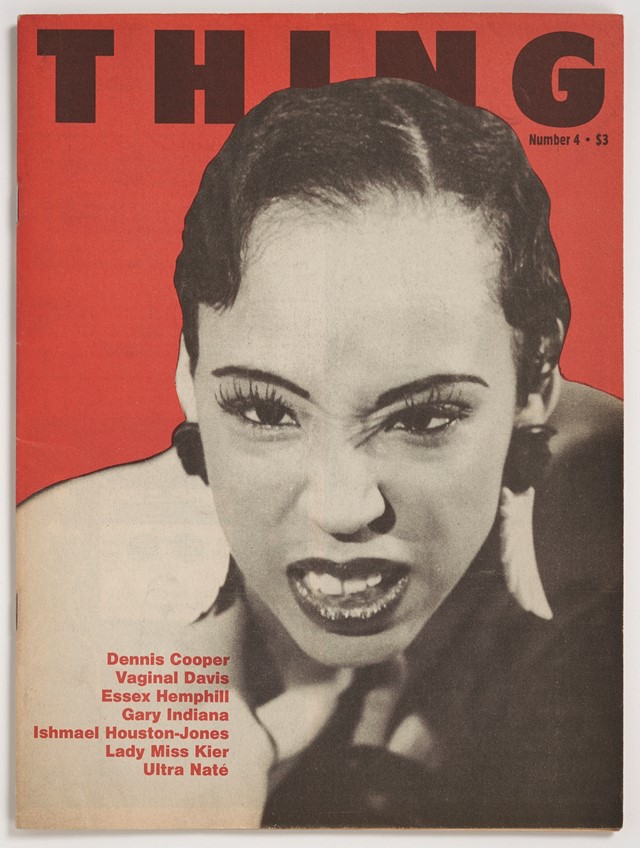
![Mark Morrisroe and Lynelle White, Dirt [Fifth Issue]](https://images-prod.dazeddigital.com/320/32-29-1242-828/azure/dazed-prod/1360/1/1361300.jpg)
